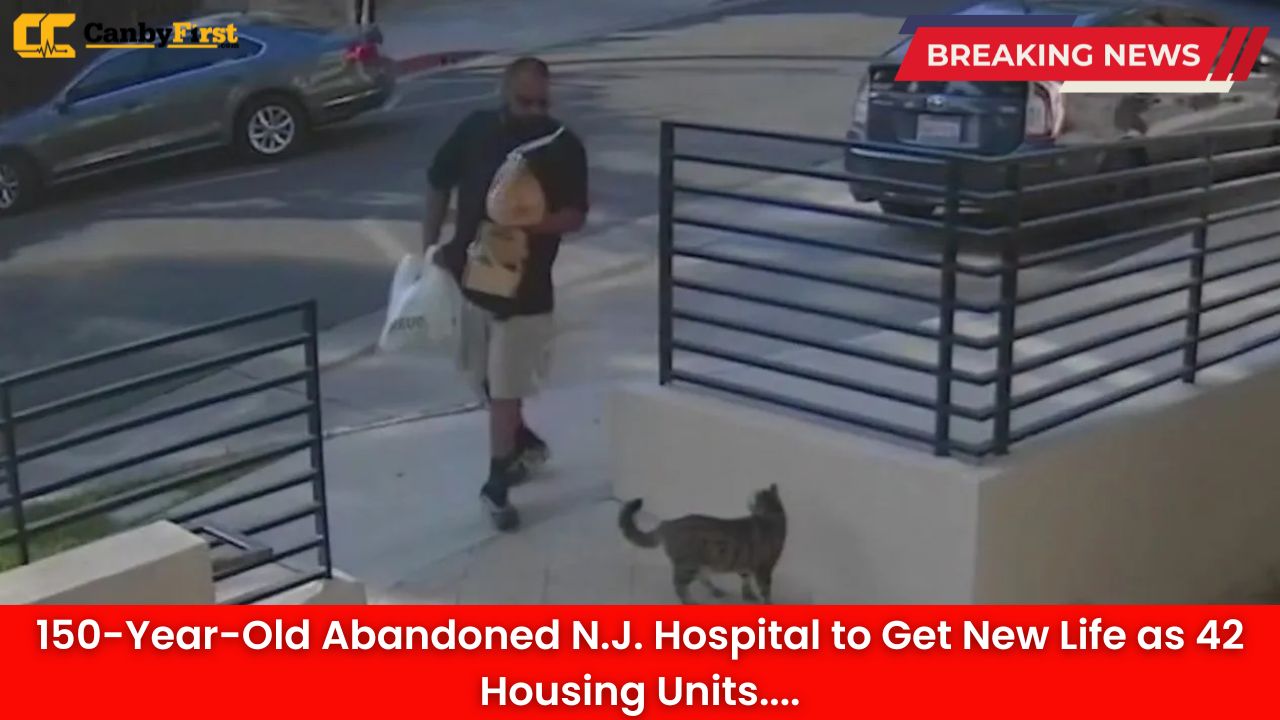A long-forgotten piece of New Jersey’s history is about to enter a new chapter. The abandoned St. Matthew’s Hospital, a 150-year-old medical institution that has stood vacant for decades, is set to be transformed into 42 modern housing units, blending the city’s historic heritage with a push for revitalization and affordable residential space.
A Landmark Reawakens
For years, the hospital’s hulking brick façade and arched Gothic windows have loomed over the quiet streets of Trenton’s Old Town neighborhood—a relic of the city’s 19th-century medical past. Built in the 1870s as one of New Jersey’s earliest charitable hospitals, St. Matthew’s served generations of local families before closing its doors in the late 1970s.
After the closure, the three-acre property became a site of urban decay—its corridors filled with peeling paint, crumbling plaster, and a lingering memory of its life-saving past. Though developers occasionally proposed renovation plans, most fell through due to the building’s complexity and strict historical preservation requirements.
Also Read
A New Vision for an Old Space
Now, more than four decades after its last patient was discharged, a redevelopment team led by Heritage Urban Partners has announced plans to breathe new life into St. Matthew’s. The $18 million project aims to convert the historic structure into 42 rental units, with a mixture of market-rate and affordable housing options.
The redesign will retain much of the original architecture—the massive archways, brickwork, and grand staircases—while modernizing the interior to include open-concept living areas, energy-efficient systems, and shared community amenities.
“We wanted to respect the spirit of this landmark while giving it a purpose people can enjoy again,” said Heritage Urban Partners spokesperson Elaine Morton. “This is about more than just creating apartments; it’s about reconnecting the community to its history.”
Balancing Preservation and Modern Needs
The project will be developed under guidance from the New Jersey Historic Trust and Trenton’s Department of Community Affairs. Developers are required to preserve the building’s exterior and several interior features, including the iconic front entrance and chapel wing, which will be repurposed as a shared lounge space.
Architectural renderings show a thoughtful blend of old and new—a testament to New Jersey’s growing trend of adaptive reuse projects. Original stained-glass windows will be restored, and the old nurses’ dormitory will become a fitness center and co-working space for residents.
“The challenge is to create something sustainable without erasing the past,” said project architect Samir Rao. “The structure was built at a time when craftsmanship mattered. You can’t just replace that with steel and drywall. We’re finding ways to let the old stone and timber speak for themselves.”
Boosting Local Housing and Community Growth
Local officials have praised the plan as a step forward for Trenton’s efforts to address housing shortages while revitalizing neglected neighborhoods.
“Every year, we lose more historic properties because of neglect or disuse,” said Mayor Reed Gusciora. “This redevelopment shows what’s possible when private initiative meets community vision. We’re turning a symbol of Trenton’s decline into a beacon of its renewal.”
The 42 new units are expected to include 10 affordable apartments reserved for low- to moderate-income residents. The city also hopes the project will attract young professionals and artists seeking character-rich housing close to downtown. A small public green space will be added on the south side of the property, open to both residents and neighbors.
Environmental Considerations
Before construction begins, environmental remediation crews will remove remaining asbestos and lead paint—a common issue in century-old institutions. The redevelopment team has pledged to follow strict EPA safety standards during the cleanup, ensuring both worker and neighborhood safety.
Once complete, the property will feature solar panels, rainwater collection systems, and high-efficiency heating and cooling units—elements aimed at reducing the building’s overall carbon footprint.
The Cultural Connection
Residents of Trenton have long shared mixed feelings about the old hospital. Many older locals recall births, surgeries, or farewells that took place within its walls. The developers plan to honor that personal history through an on-site exhibit, featuring artifacts and photographs donated by former patients and staff members.
“It’s going to be more than apartments—it’ll be a living museum of what this place meant to the city,” said local historian Carla James. “In preserving the hospital, we preserve our stories too.”
A local arts organization is also planning a mural on the building’s rear façade to celebrate the hospital’s legacy in the community’s evolution from an industrial city to a modern, creative hub.
Economic and Social Impact
Economists estimate the project could generate over 100 temporary construction jobs and about a dozen permanent maintenance and management roles once completed. But beyond numbers, officials say the redevelopment will help reinvigorate nearby small businesses.
Cafés, shops, and service providers in Old Town could see a resurgence in foot traffic, particularly after the area adds new infrastructure and streetscape improvements funded through state revitalization grants.
Construction Timeline
Developers expect renovation work to begin in early 2026, following final approval from the city council and the state’s historic commission. Completion is projected for late 2027, with units becoming available shortly thereafter.
Preservation advocates have expressed cautious optimism about the timeline, noting that unexpected structural issues often extend projects of this scale. Still, early inspections have suggested the hospital’s foundational integrity remains strong—a testament to 19th-century craftsmanship.
A Symbol of Renewal
For now, St. Matthew’s Hospital stands as a reminder of Trenton’s layered history—its brick corridors silent but filled with the echoes of countless lives once touched there.
When the lights come back on in a few years, the building will not just house new residents; it will embody the city’s resilience, adaptability, and belief in rebirth through preservation.
FAQs
1. Where is the former St. Matthew’s Hospital located?
The hospital is situated in Trenton’s Old Town neighborhood, not far from downtown and the Delaware River waterfront.
2. How many housing units will the redevelopment include?
The building will feature 42 newly developed housing units, combining market-rate and affordable apartments.
3. When will construction begin and end?
Renovation is slated to begin in early 2026, with completion expected by late 2027.
4. What historical elements will be preserved?
Developers plan to preserve the brick façade, main entrance, chapel wing, and original stained-glass windows, maintaining the building’s architectural integrity.
5. Will the project include community spaces?
Yes. Plans include shared lounges, a fitness center, co-working spaces, and a small public green area on the property’s south side.












